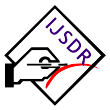Imp Links for Author
Imp Links for Reviewer
Research Area
Subscribe IJSDR
Visitor Counter
Copyright Infringement Claims
Indexing Partner
|
Published Paper Details
|
|
| Paper Title: | Effects of Repetition Training and New Interval Training Methods on Anaerobic Fitness: In the Case of Short and Middle Distance Athletes |
| Authors Name: | Amrot Gizaw Gibo , Birhanu Tebkew Fenta , Zelalem Melekamu Tegegne , Yonas Mebrat Dagnaw |
| Unique Id: | IJSDR2304152 |
| Published In: | Volume 8 Issue 4, April-2023 |
| Abstract: | The purpose of the study is to compare the effects of new interval training methods and repetition training methods on short- and middle-distance athlete’s anaerobic fitness. Thirty (30) short and middle distance project athletes were selected comprehensively from the total of 40 athletes. Based on the pretest result, the subjects were randomly assigned to the repetition (n = 15) and new interval (n = 15) training groups. The study design was quasi-experimental. So as to measure the effect of the training, five anaerobic fitness tests, viz., the 400-meter drop-off test, the 150-metre endurance test, the 30-metre flying test, and the RAST test, was measured. To evaluate the effect of these training methods and whether there was a significant difference between pre- and post-intervention results after 8 weeks of three days per training intervention week, a paired sample t test was employed. In addition, to examine differences between the two groups results on anaerobic fitness, an independent sample t-test with an alpha value of 0.05 was employed. Both training methods have a significant effect on anaerobic efficiency, speed endurance, maximum speed, power, and fatigue index as measured pre- and post-test. There was a significant difference between the repetition training group and the new interval training group in terms of anaerobic efficiency (p =.020, MD =.807) and maximum speed (P =.008, MD =.448). There was no significant difference between the two groups in the level of speed endurance (p = 0.150), power (p = 0.619), or fatigue index (p = 0.788). Therefore, two months of both the new interval training method and the repetition training method were effective for the improvement in all the above-mentioned fitness variables. The repetition-training method is better than the new interval-training method in improving anaerobic efficiency and maximum speed, but there was no significant difference between groups in speed endurance, power, or fatigue index. Therefore, it would seem highly recommended to implement both repetition and new interval training programmes to improve anaerobic fitness, and repetition training should be more effective than new interval training. |
| Keywords: | Anaerobic Fitness, Repetition Training, New Interval Training, Athletes, Short distance & middle distance |
| Cite Article: | "Effects of Repetition Training and New Interval Training Methods on Anaerobic Fitness: In the Case of Short and Middle Distance Athletes", International Journal of Science & Engineering Development Research (www.ijsdr.org), ISSN:2455-2631, Vol.8, Issue 4, page no.888 - 893, April-2023, Available :http://www.ijsdr.org/papers/IJSDR2304152.pdf |
| Downloads: | 000336851 |
| Publication Details: | Published Paper ID: IJSDR2304152 Registration ID:205120 Published In: Volume 8 Issue 4, April-2023 DOI (Digital Object Identifier): Page No: 888 - 893 Publisher: IJSDR | www.ijsdr.org ISSN Number: 2455-2631 |
|
Click Here to Download This Article |
|
| Article Preview | |
|
|
|
Major Indexing from www.ijsdr.org
| Google Scholar | ResearcherID Thomson Reuters | Mendeley : reference manager | Academia.edu |
| arXiv.org : cornell university library | Research Gate | CiteSeerX | DOAJ : Directory of Open Access Journals |
| DRJI | Index Copernicus International | Scribd | DocStoc |
Track Paper
Important Links
Conference Proposal
ISSN
 |
 |
DOI (A digital object identifier)
  Providing A digital object identifier by DOI How to GET DOI and Hard Copy Related |
Open Access License Policy
Social Media
Indexing Partner |
|||
| Copyright © 2024 - All Rights Reserved - IJSDR | |||






Facebook Twitter Instagram LinkedIn